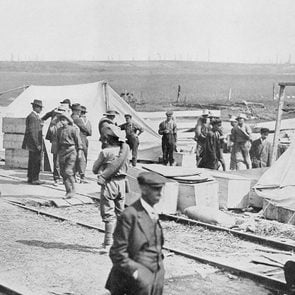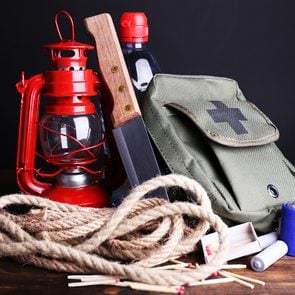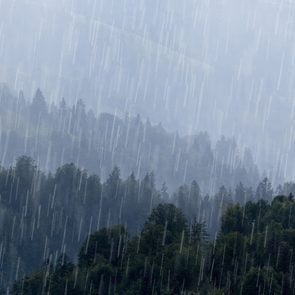Why This City is Called the Hailstorm Capital of Canada
In a 30-year span, it's been hit by two of the most devastating hailstorms in our country’s history.

Calgary summers are famous for many things—the sunshine, the Stampede, the Beltline nightlife—but the most memorable might be the baseball-sized chunks of ice plummeting from the sky. Here in “Hailstorm Alley,” the moniker given to the stretch between Red Deer and Calgary, Canada’s two worst hailstorms have shattered windows, downed power lines and wreaked billions of dollars in havoc.
A record-breaking Calgary hailstorm
The most destructive hailstorm in Calgary history—and the fourth costliest natural disaster in Canada—took place on June 13, 2020, when a balmy summer day turned into a wintry hellscape soon after thunder roared around 6:40 p.m. By 7:00 p.m., hail began pelting the airport at the northeast corner of the city. Temperatures dropped more than five degrees Celsius in six minutes. Falling at speeds of up to 100 kilometres per hour, three-inch hailstones punched holes in lawns and roofs, shredding siding and crushing crops.
Just to give you a perspective of the size #abstorm pic.twitter.com/CnccwgCTdY
— Adnankhan159 (@Aishfaq159hotm1) June 14, 2020
Overland flooding was so sudden, drivers had to be rescued from their cars on Deerfoot Trail highway. By the time the storm ended several hours later, it left $1.3 billion in insured damages, with more than 70,000 claims on homes and vehicles in the city’s densely populated northeast.
The 2020 hailstorm beat the record set by another catastrophic Calgary hailstorm on September 7, 1991, which caused damage totalling an estimated $880 million in today’s dollars. In just 30 minutes, golf ball-sized hail smashed windows and crushed birds, while flash flooding built up so much pressure in city sewers that it blew the covers off 15 manholes. A four-acre greenhouse in the city’s northeast was shattered into a “sea of glass” that fell onto thousands of delicate nursery plants.
In addition to those two whoppers, separate Calgary hailstorms in 2010 and 2014 caused more than $400 million in damages each.
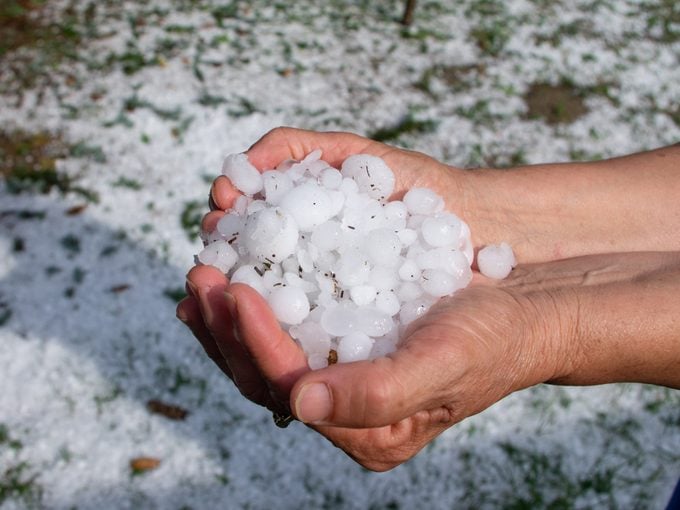
Why are there so many hailstorms in Calgary?
Although those storms are noteworthy in scale, hail falls in Calgary an average of five times every year. It’s not just a matter of bad luck: in the lee of the Rocky Mountains, the city happens to sit at the confluence of some unique wind and weather patterns that are especially conducive to hailstorms.
As high-elevation winds sweep in from the mountains to the west, they can combine with cold winds from the north and warmer, humid air from the south to create a swirling, volatile weather system called an upper trough, a ripe breeding ground for storms. Hail happens when violent updrafts inside tall cumulonimbus clouds bounce falling raindrops back up into the upper atmosphere, where colder temperatures turn them to ice. The popcorn-like rising and falling can add layer upon layer of ice, creating larger hailstones that finally get heavy enough to fall to earth. Hail that reaches the diameter of a quarter (about 2.5 centimetres) or more becomes destructive, potentially cracking windshields and injuring people.
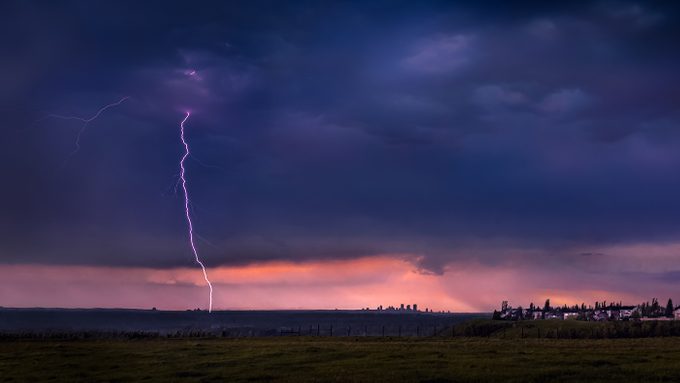
Calgary’s long-term forecast
To try to mitigate the chaos and expense caused by hail, a group of insurance companies began investing in the Alberta Hail Suppression Project in the late 1990s. Using a technique called cloud seeding, specially equipped planes spray storm clouds with silver iodide smoke particles, which encourage the development of ice crystals. In theory, the more crystals, the more they compete for available water within the clouds, which creates smaller ice pellets and inhibits the formation of larger, bullet-like hailstones. To date, cloud seeding hasn’t been shown to prevent Calgary’s more destructive hailstorms.
Meteorologists say Calgary can expect to see more hail damage in the future, as global warming increases the risk of all types of severe weather, while the city’s population grows and the cost of building repairs rises. If you find yourself caught in a hailstorm, the City of Calgary recommends leaving open areas and seeking shelter immediately, staying away from windows, doors and skylights.
Next, read the terrifying story of the worst tornado in Canada’s history.
